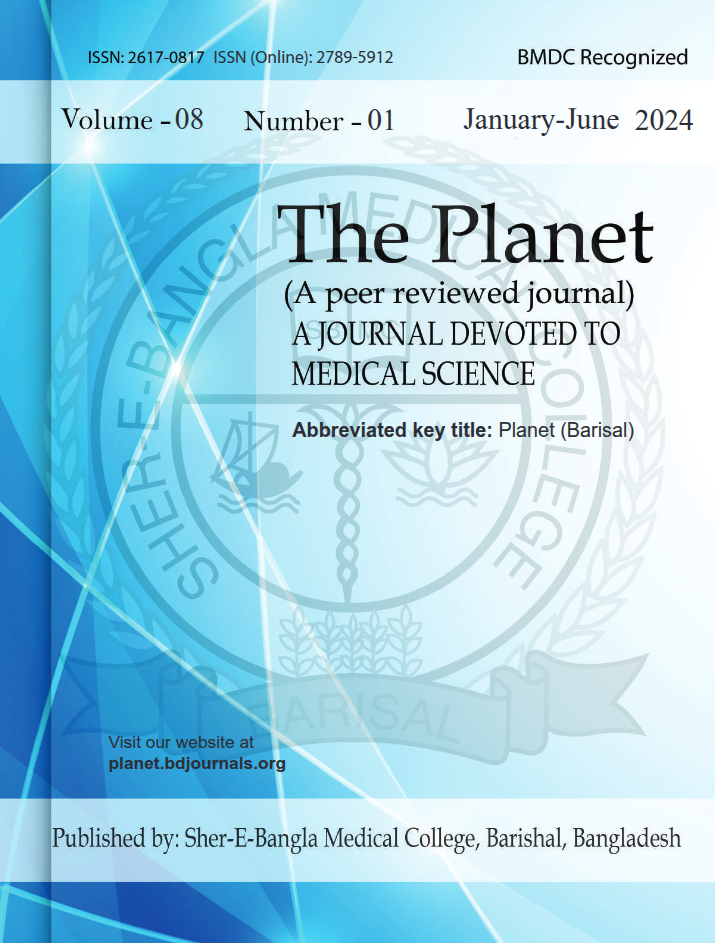Diagnostic Accuracy of Urine Cytology in Detecting Recurrence of Superficial Urothelial Carcinoma - A Comparative Analysis
Published 28-12-2024
Keywords
- Urine cytology,
- Bladder cancer,
- Superficial urothelial carcinoma,
- Diagnostic accuracy,
- Sensitivity
- Specificity,
- Recurrence detection,
- Cystoscopy,
- Histopathology ...More
Copyright (c) 2024 The Planet

This work is licensed under a Creative Commons Attribution 4.0 International License.
How to Cite
Abstract
Background: Bladder cancer, particularly superficial urothelial carcinoma (SUC), has a high recurrence rate, necessitating effective and reliable surveillance strategies. While cystoscopy and histopathology are the gold standards, they are invasive and costly. Urine cytology, a non-invasive diagnostic tool, is widely used for recurrence detection, yet its sensitivity and diagnostic reliability remain debated. This study evaluates the diagnostic accuracy of urine cytology compared to histopathology in detecting recurrent bladder cancer. Methods & Materials: A hospital-based prospective analytical study was conducted at BSMMU, Dhaka, including 60 patients with a history of TURBT for SUC. Urine cytology results were compared with histopathology, assessing sensitivity, specificity, positive predictive value (PPV), negative predictive value (NPV), and overall accuracy. Results: Urine cytology showed a sensitivity of 61.54%, specificity of 94.12%, PPV of 88.88%, NPV of 76.19%, and overall diagnostic accuracy of 80.0%. It correctly identified 16 true positive (TP) cases and 32 true negative (TN) cases but missed 10 false negatives (FN) and reported 2 false positives (FP). The high specificity and PPV confirm its reliability in detecting high-grade bladder cancer, while the moderate sensitivity indicates its limitations in detecting low-grade tumors. Conclusion: Urine cytology remains a highly specific, cost-effective, and non-invasive tool for bladder cancer surveillance, particularly in detecting high-grade recurrences. However, its moderate sensitivity and false-negative rate suggest that it should be used in conjunction with cystoscopy and histopathology. Future studies should focus on combining urine cytology with molecular biomarkers to enhance early detection and improve diagnostic accuracy.



